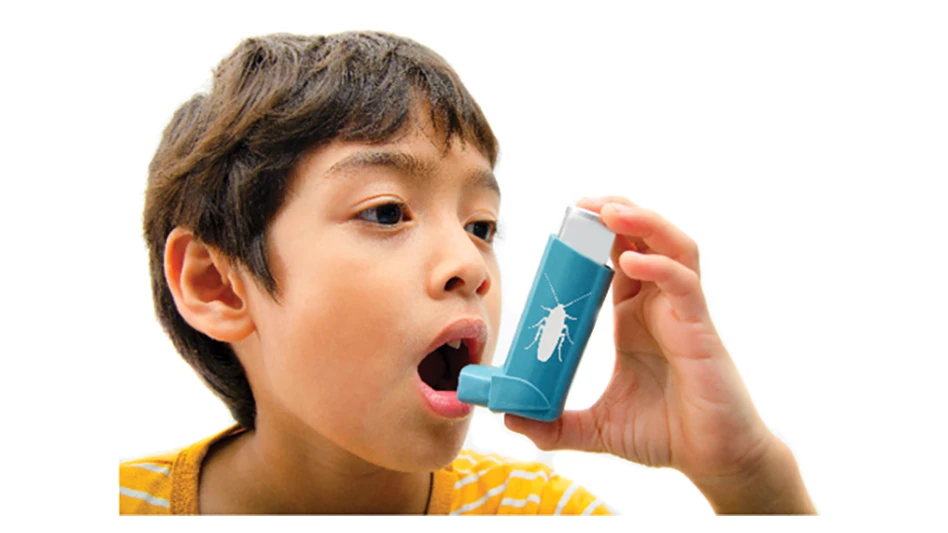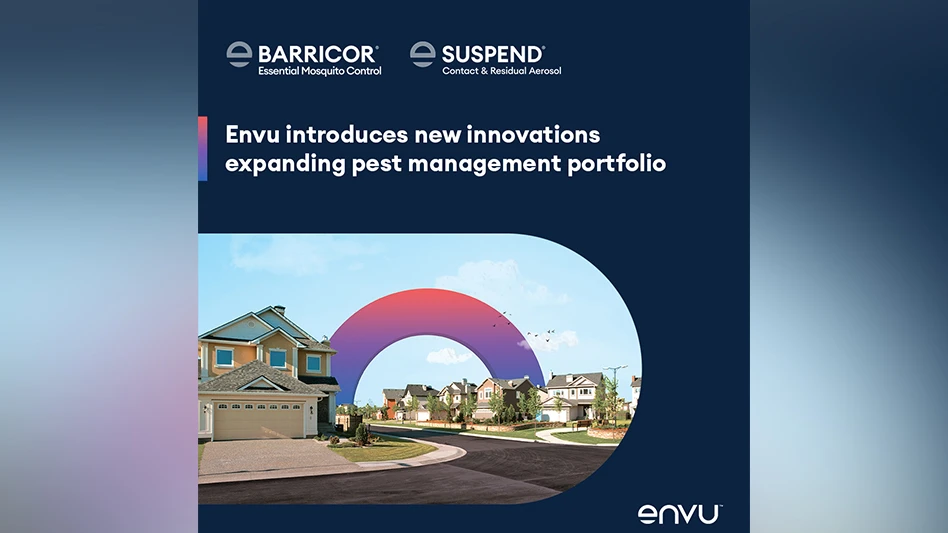
Though they seem restless and unpredictable, squirrels can be quite crafty and determined. When they want into your customer’s attic, they won’t give up until successful. Of course, once inside, they leave behind a mess, from holes in wood soffits to soiled insulation and gnawed wiring.
Nearly a third (31 per cent) of pest management professionals said squirrels were problematic in their service areas, found the 2022 PCT State of the Rodent Control Market survey, and 17 per cent said the number of squirrel infestations in their markets had increased in the past year.
To effectively combat tree squirrels, PMPs must embrace Integrated Pest Management (IPM), says Bill Kolbe, who has worked in the pest management industry for 47 years. He shared tips for resolving squirrel and rodent problems at PCT’s 2020 Virtual Rodent Conference.
Kolbe is president of WAKOLBE Consulting and is a regular speaker at industry conferences. Previously, he was director of technical training for Viking Pest Control in New Jersey.
ASK THE RIGHT QUESTIONS. When dealing with vertebrate pests, it is important to interview the customer to learn what they’ve seen, smelled or heard. The latter includes scratching noises, running, chewing, chirping, cooing, growling and squeaking.
Ask your customer when this activity started, how long it has been going on and what time of day it is most noticeable. Where are these noises, smells or activity occurring in the structure?
To get a sense of population dynamics, ask if neighbors or the neighborhood in general are having squirrel issues. Is there something else taking place in the environment that might be impacting the squirrel population?
To help evaluate the animal pressure on properties before even setting foot on them, Kolbe uses Google Earth aerial maps to identify adjoining wooded areas, food and water sources.
You can learn a lot about the surrounding area this way — things you wouldn’t know if you just pulled up into the driveway, he says. For instance, you might not realize a creek runs along the back property line, or that on the other side of the wooded area (which is full of nut-producing trees) is a large commercial bakery.
LOOK FOR SIGNS. Thoroughly inspect the interior and exterior of the structure, looking for animal signs and entry points. Visible signs include droppings, tracks, nests, babies, gnawing damage and stains on ceilings. Also detectable may be odours of droppings, urine and dead animals.
“Become an expert in scatology; that way, you know exactly what pest you're dealing with,” suggests Kolbe.
Pay special attention to soffits, gable vents, attic vents, roof edges and near chimneys. Look for where overhanging tree branches may provide easy access to the roof. (Drones with high-resolution cameras can help you inspect high areas without needing to use a ladder.)
A game or trail camera can help identify the critter and where it is accessing the structure. “Trail cams really, really work well. And you can put these in drop ceilings and all kinds of places. I really love using my trail cam,” says Kolbe.
CLEAN UP DROPPINGS. Whether done by you or the property owner, clean up any animal droppings. Removing the droppings will help reduce the potential for health-related illness. A clean area also will help you identify new squirrel activity.
Site remediation, disinfection and replacing soiled insulation can provide an additional revenue stream for PMPs, he adds.
UNDERSTAND THEIR MOTIVATION. Gray, red, fox and flying squirrels are common throughout North America. Their average lifespan is about three years. Females breed about twice per year, having two to four pups per litter.
Nesting is a learned behavior. “If born in a house, they will look to nest in a house,” says Kolbe.
So instead of living out in the woods, the squirrel’s behaviour changes, and its focus turns to getting into the house to nest. If you inadvertently seal their pups inside the attic, they will chew through window frames and vulnerable areas to get to them.
Why do squirrels gnaw in general? Like other rodents, squirrels must chew on hard objects to keep their constantly growing teeth at the proper length.
Squirrels are known to be carriers of lice, fleas and ticks. Black-legged ticks are vectors of Lyme disease.
FOCUS ON FOOD SOURCES. All animals need food, water and shelter.
“Food is probably the No. 1 mitigating factor from an integrated pest management standpoint that we can deal with,” says Kolbe. And people feeding wildlife is probably the No. 1 source of food for squirrels. “Squirrels learn very quickly where easy food comes from,” he says.
Look for food sources that may be attracting squirrels to the property and identify ways to eliminate or mitigate them. Advise clients to upgrade to rodent-proof trash cans, eliminate or move bird feeders away from the house and deter squirrels from vegetable gardens and fruit trees by using netting or motion-activated sprinklers. Doing this can be more difficult if the food source exists on a neighbouring property.
By comparison, it is more difficult to control outdoor water sources. And while exclusion helps keep squirrels out of sheltering structures, it doesn’t guarantee the critters won’t find or chew another way inside.
INTERVENE EARLY. To prevent squirrel intrusions, clients should take early steps to deter their behaviour. Explain to them the importance of being observant and to be on the lookout for squirrels on or near the structure, such as near window frames or garbage cans.
Using repellents may help deter squirrels before they get too familiar with the structure and begin chewing. Clients “need to do all they can to keep wildlife from acclimating to their home,” says Kolbe.
Frequently applied homemade deterrents, such as red pepper flakes or a water-ammonia mix administered via spray bottle, may deliver results. “I absolutely would try it and start a database on what works and what doesn't work,” says Kolbe.
TRAP AND RELEASE. If squirrels are living inside the structure, live trapping is the best solution to removing them. Be sure to follow provincial and municipal bylaws for trapping and releasing squirrels. Trail cameras can help you monitor traps remotely.
For flying squirrels, secure traps two to three inches up on the rafter or joist if possible.
Kolbe suggests pre-baiting the trap, especially over a weekend. He also suggests covering and camouflaging the trap, such as with evergreen boughs. This will make the animal more comfortable entering it. Be sure to wire traps to soffits and roof areas so they don’t move and fall off. Keep traps out of the sun and out of neighbors’ view.
When setting traps, Kolbe recommends hot gluing shelled, unsalted sunflower seeds to the trigger mechanism. This prevents the squirrel from stealing bait.
Lethal traps, if allowed by law, should be used as a last resort and with the utmost care to prevent injury to pets, children and non-target wildlife.
EXCLUDE THOROUGHLY. Once squirrels have been removed from the structure, seal up entry holes. Squirrels acclimated to living in the structure will attempt to get back in, so use materials the squirrels cannot chew through, like sheet metal, aluminum and heavy gauge wire mesh.
In addition to sealing existing entry points, carefully look for other vulnerable places on the structure where the squirrels may attack next.
A thorough inspection will help you formulate a plan and identify material and accessibility needs. For instance, do you need a ladder or scissor lift to exclude a high gable eave?
DON’T GET COMPLACENT. Squirrels, or any rodents, are not going to behave according to research and technical reports. “Just when you think you got the animal nailed, the animal's probably going to win out. They've been on this earth a lot longer than humans have,” says Kolbe.
WANT MORE?
Enter your email to receive our newsletters.
Latest from Pest Control Technology
- How to Get Rid of Odorous House Ants
- Massey Services Promotes Herndon to Director of Sales for Multi-Family Division
- NPMA Announces First Recipients of NPMA PRO Certified Credential
- Pestmaster of the Hudson Valley Acquires Catskill Animal Damage Control
- Photo Slideshow: Ant Identification Tips
- Video: Top 10 PCT Photo Contest Finalists
- UF/IFAS Study Reveals Boats as Perfect Vessels for Global Termite Spread
- Pest Control Consultants (Iowa) Earns Pinnacle Performance Award










